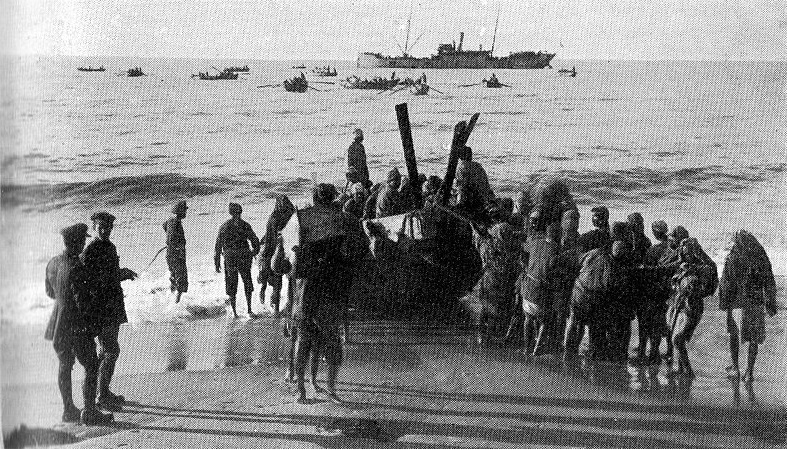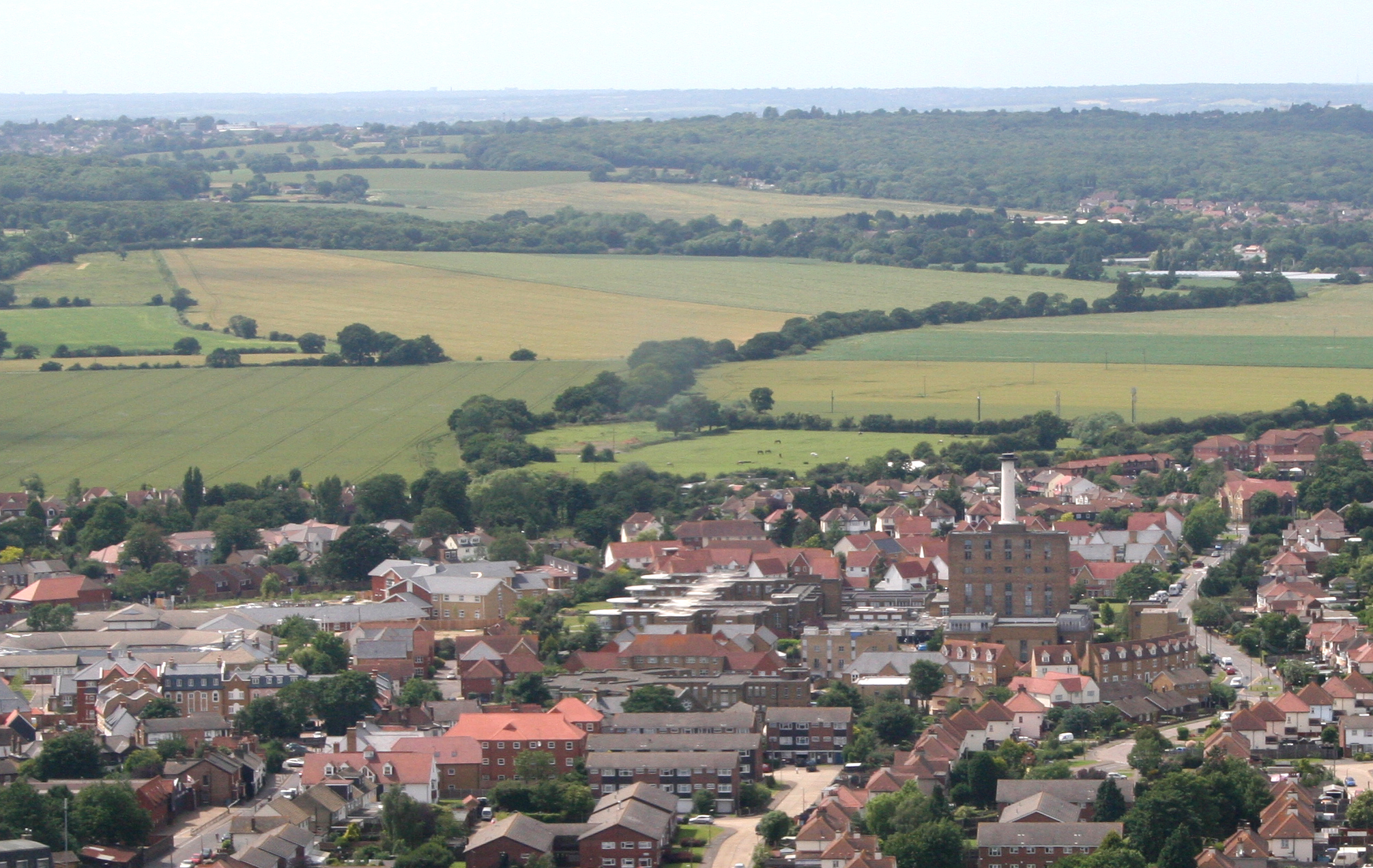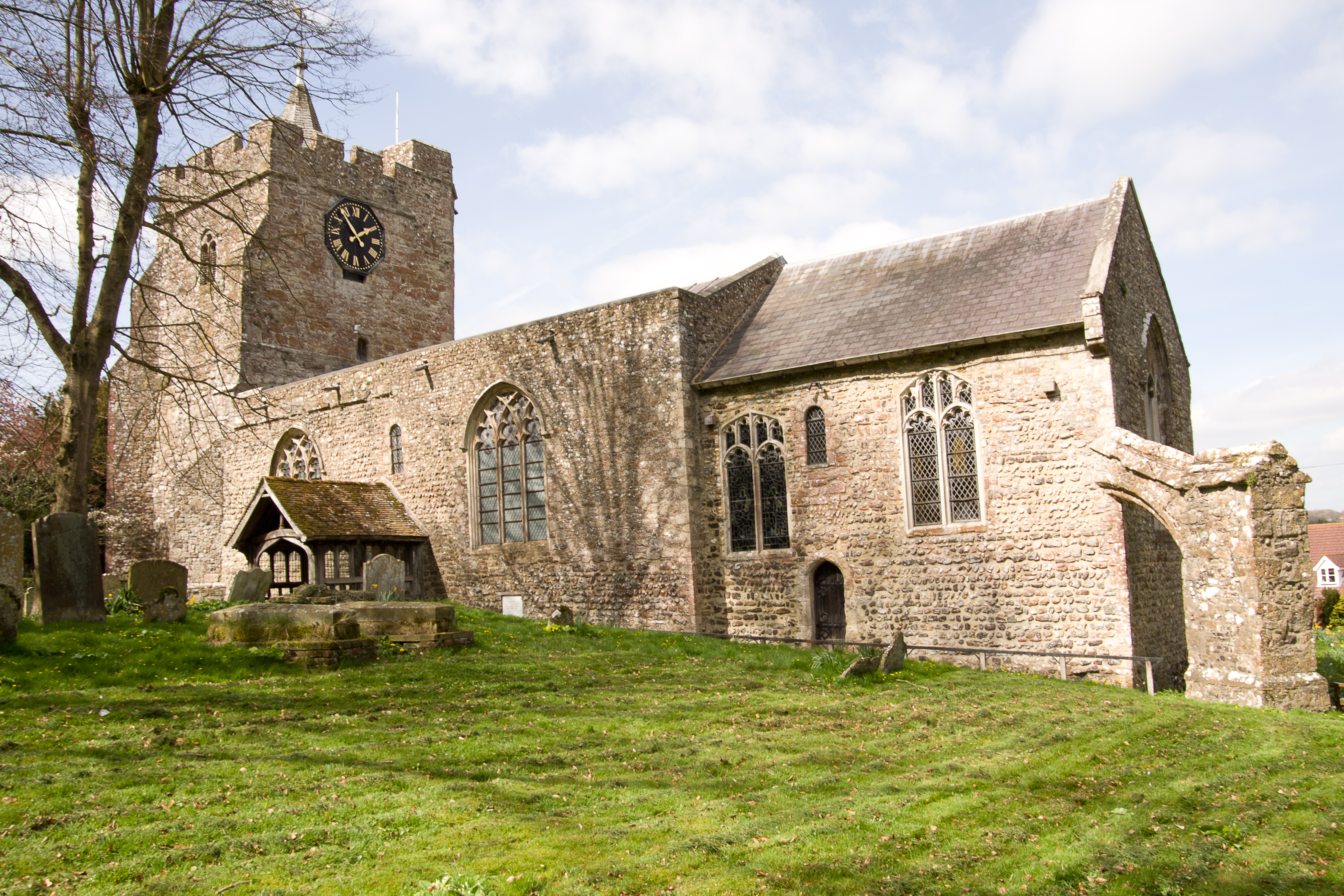I have already discussed in some detail
the lives of George and Elizabeth AMOS after their marriage, when they were
living on Wallasea Island
at the Creeksea Ferry. However, I have only alluded to their lives before that.
A few years ago I was able to trace Elizabeth’s parents and
siblings, but only within the past month have I made the breakthrough that
allows me to identify with conviction the previous family of George. But let us
begin where I did: with the 1881 British census.
1881 finds the AMOS family residing in the “Ferry House” on Wallasea
Island. It identifies George’s
birthplace as Dover, Kent,
and Elizabeth’s as Maldon, Essex.
Fortunately for us, a niece by the name of Esther FILBY is staying with them.
Of course, she may be the daughter of a sister of either spouse, but there is
the hope that she is the daughter of a brother of Elizabeth.
That gives us the first hint of a possible maiden name for Elizabeth.
Perhaps her name had been Elizabeth FILBY.
This surmise holds up when examining the 1891 census. By an
even more fortuitous circumstance (from the point of view of the genealogist),
George’s mother-in-law is now living with them. To state the obvious, that can
only be Elizabeth’s mother. And
what is her name? Mary A. FILBY. She is listed as a widow, and her birthplace
as Stow, Essex—which,
however, cannot be found on any map. George’s birthplace is now identified as East
Langdon, a village near Dover,
and Elizabeth’s is still identified
as Maldon.
Armed with the information gleaned from these censuses, I
was able to find a marriage record of sorts at FamilySearch. As a transcription
of an index, it could hardly be considered the best possible evidence, but it
did yield some valuable information. According to this record, a George AMOS
and an Elizabeth TILBY were married at Christ
Church in Southwark on 7 Nov 1875. Considering how easily Ts
and Fs can be confounded in older handwriting (and being unable to examine the
original handwriting myself), the name TILBY is a good match for FILBY. The
date is also a good match, being just far enough before the birth of their
oldest child. The location surprised me a little, but was not far enough out of
the way to be improbable. The record, of course, contained a source microfilm
number which I could have ordered at my local Family
History Center,
but I never quite got around to it.
 |
| Elizabeth FILBY |
|
From here, knowing her birthplace to be Maldon, estimating
her birth date as 1855, and knowing her mother to be Mary A. FILBY born c.
1812, it was not particularly hard to find Elizabeth
living with her parents before her marriage. An entry with all the requisite
particulars (excepting that her mother’s birthplace is recorded as Purleigh
instead of Stow) appears in 1871 in
Latchingdon, Essex. It is the household of John FILBY, a shoemaker, born c.
1814 in Purleigh. Living with him are Mary his wife and Elizabeth his daughter.
No other family members are mentioned.
Tracing them back a little father, we find that Elizabeth
was not an only child. In 1861, in Snoreham, Essex, the household contains a
son, William, born c. 1849 in Snoreham, a daughter, Mary Ann, born c. 1853 also
in Snoreham, and Elizabeth, still born in Maldon. This time the enumerator
reports that their mother Mary was born in Stowe Maries, Essex,
which is phonetically close to the “Stow”
of 1891 and finally furnishes a location that can be found on a map.
Now that we know the proper household, we can go back even
farther. The 1851 census reveals yet two more children: Henry FILBY, born c.
1835 in Purleigh, and Samuel FILBY, born c. 1850 in Latchingdon. These are in
addition to William FILBY, to whom we have already been introduced.
Going back farther yet, to the earliest British census that
lists the names of inhabitants, namely the 1841 census, brings us a little bit
of a surprise. John FILBY, shoemaker, lives in Purleigh, Essex with his son
Henry FILBY—and his housekeeper Mary HOWARD. This Mary HOWARD is approximately
the age that Mrs. Mary FILBY would have been in that year: 24 is only three
years from the expected 27. This page of the 1841 census also gives a clue as
to Mary’s parents. The previous household is headed by a John HOWARD, age 60.
Given their close proximity and identical surnames, it is a credible guess that
John HOWARD is Mary’s father.
From this census we can deduce that Henry FILBY is John’s
son from a previous marriage, and we can guess that Mary HOWARD was soon to
become Mrs. Mary FILBY. The latter guess is backed up by the FreeBMD Marriage
Index, which reveals that in the Oct-Dec quarter of 1842 there was indeed a
marriage between a John FILBY and a Mary HOWARD.
Since we have reached the earliest possible census in our
search, let us leap forward in time to the period between when we last saw Mary
with her husband in 1871 and when we see her as a widow living with her
daughter Elizabeth in 1891.
John FILBY is still alive and apparently making shoes at the
time of the 1881 census. He and his wife are living together in an empty nest
in Latchingdon. They are both reported as having been born in Purleigh, and for
the first time since she was a housekeeper for her future husband, Mary has a
recognized occupation of her own. She is identified as a “Nurse Sub Med,” which
seems to be a sort of acknowledged nurse, but without formal training as such.
The best possibility for when Mary (HOWARD) FILBY became a
widow is found in the FreeBMD death index. There is a record in the Oct-Dec
quarter of 1882 for the death of a John FILBY in the Maldon district. This is
the best match both because of his age and his location.
I have also done some research on Elizabeth’s
siblings, especially her brother William, but we will leave that for another
time.
 |
| George AMOS |
As for George AMOS’ ancestry… that has been a little more
difficult to trace. Taking East Langdon, near Dover,
Kent as his birthplace,
and searching the censuses for a George AMOS born c. 1853 brings multiple
results, none of them an obvious match. There were, however, other researchers
on this line, and I tentatively accepted their claim that he was the son of
Edward AMOS and Sarah CONSTABLE.
Last month I returned to George AMOS’ profile on Ancestry
and did another search for records. Ancestry is always updating and adding new
databases, so periodic searches are essential. And this time my search was well
rewarded. Remember that transcribed marriage index record that I found and
never got around to ordering? There was the original, in all its handwritten
glory, digitally scanned and appearing on my computer screen through the wonder
of modern technology.
I have become more or less inured to disappointment in
marriage records (outside of Luxembourg),
seldom finding much in them beyond what is already known. That, at least, has
been my experience of American marriage records, some of which contain no more
than names and a date. This, however, was not to be my experience in the
marriage of George AMOS and Elizabeth FILBY—FILBY, indeed, now that I could see
it with my own eyes and distinguish the letter F. (The difficulty had arisen
with her signature, in which the line crossing the F seems instead to be
dotting the i.)
Most notable of the information contained within this record
is the names and professions of the fathers of both the bride and the groom.
The bride’s father, as anticipated, is John FILBY, a shoemaker. Although not
new information, it is helpful in that it shows that we do have the correct
marriage record. And now—if only there were a way to print a drum roll!—we come
to the groom’s father. Strictly speaking, he appears on the record before the
bride’s, but I have taken the liberty of creating a little suspense. The
groom’s father is stated to be Abraham AMOS, labourer. So we can discard (or at
least set aside, as they could turn out to be related more distantly than
previously thought) the family of Edward AMOS and Sarah CONSTABLE.
Finding an alternate George AMOS, given the superfluity of
the name, has not been hard. In fact, a George AMOS of the proper age and
approximate birthplace is found the son of an Abraham AMOS in 1861.
Conveniently, several of the details contained in this census fit what we know
of the Creeksea Ferry’s George AMOS better than the formerly accepted household
of Edward AMOS. Firstly, the location of the household is East
Langdon, claimed as George’s birthplace in 1891. The birthplace of
this 1861 George AMOS is said to be West Langdon, but he
is only eight years old; perhaps he was raised in East Langdon.
In any event, the two villages are within a couple miles from one another, and
share noticeably similar names.
Secondly, Abraham AMOS’ wife is named Isabella, which would
be a likely source for the name of our George’s eldest daughter. Such a
supposition would be consistent with common Victorian naming practices,
although they don’t seem to have strictly adhered to any such practice. (The
origin of their eldest son Arthur’s first name remains a mystery.)
Thirdly, although this is admittedly rather slim evidence,
we can amend the parenthetical observation about George and Elizabeth AMOS’
eldest son. Despite the fact that the source of his first name is unknown, this
household at least gives a possible source for his middle name. There is a son
of Abraham AMOS named Thomas, which is known to be Arthur’s middle name.
Working forward with this household, we find Abraham AMOS
again heading his family in East Langdon in 1871. This
time, however, the only child still living with them is Thomas. Once again we
are faced with the question of where George could be. Since he is not residing with his parents,
and since we can eliminate the George AMOS known to be the son of Edward AMOS
as well as any listed as the son of other parents, the most feasible candidate
(but certainly not the only possibility) appears in the William PIERCE
household of Saltwood, Kent.
This George AMOS, listed as a servant, is the right age. He is said to have
been born in Saltwood, but that is within twenty miles of East
Langdon, near enough for an error to be plausible. That is the
extent of the case for him, so acceptance of this as our George AMOS can be only
on the most tentative basis.
Reversing direction, we can work backward through the
censuses with the Abraham AMOS family. But first we must take another glance at
their household in 1861. Way down at the bottom of their household, where
visitors and servants are usually found, appears the name William COCK, age 21.
Servant he is not, nor is he a visitor or a lodger. Curiously, he is a “son.”
The fact that his surname is not the same as that of his father suggests that
he is not the son of Abraham AMOS, but rather his stepson. Such a hypothesis
would imply that Isabella had either had him by a previous marriage or
illegitimately before she was married. Therefore, we can presume that her name
when she married Abraham had been Isabella COCK.
In 1851, we find Abraham and Isabella in West
Langdon. This time the household includes a son William the same
age as William COCK would be. It is probably the same person, but this time
styled an AMOS. It is not uncommon to find a stepchild enumerated in a census
with a technically inaccurate surname. Thomas AMOS is also included in the
household, but his line contains no surprises. He is three years old and said
to have been born in Eythorne, Kent.
In fact, so far as I have discovered, his birthplace is recorded so
consistently that the only part of it that varies from census to census is the
spelling.
The FreeBMD marriage index discloses a marriage between
Abraham AMOS and Isabella COCK in the Apr-June quarter of 1847 in the Eastry
district of Kent. Therefore they were not yet married to one another at the
time of the 1841 census, and at this time the paucity of information on their
lives before their marriage makes it impossible to locate them with certainty
in that census.
Sources:
1841 England Census, Essex, Purleigh,
page 23, How Green, John Filby household. GSU roll: 241366. Digital images, Ancestry.
1851 England Census, Essex, Snoreham,
page 30 (stamped 301), no. 23, John Filby household. GSU roll: 207425-207426. Digital images, Ancestry.
1851 England Census, Kent, West Langdon,
District 7, page 20-21 (stamped 57-58), no. 22, house 3, Abraham Amos
household. GSU roll: 193534-193535.
Digital images, Ancestry. Accessed
21 Sept 2012.
1861 England Census, Essex, Snoreham,
District 3, page 23-24 (stamped 48A), no. 30, John Filby household. GSU
roll: 542751. Digital images, Ancestry.
1861 England Census, Kent, East Langdon, page 11 (stamped
20), no. 48 Martin Langdon, Abraham Amos household. GSU roll: 542659. Digital images, Ancestry. Accessed
21 Sept 2012.
1871 England Census, Essex, Parish of
Latchingdon, page 16, no. 93, John Filby household. GSU roll: 829959.
Digital images, Ancestry.
1871 England Census, Kent, East Langdon, Martin, page 7
(stamped 21), no. 42, Abraham Amos household. GSU roll: 827259.
Digital images, Ancestry.
Accessed 21 Sept 2012.
1871 England Census, Kent, Saltwood, page 27-28 (stamped
38), no. 130, house no. 127, William Pierce household. GSU roll:
827265. Digital images, Ancestry.
Accessed 21 Sept 2012.
1881 England Census, Essex, Wallasea Island, Rural Sanitary
District of Rochford, page 1, no. 2, “Ferry House,” George Amos
household. GSU roll: 1341427.
Digital images, Ancestry.
1891 England Census, Essex, Canewdon, Rural Sanitary
District of Rochford, page 1, no. 1, Cricksea Ferry Rd (Ferry Boat), George
Amos household. GSU roll: 6096503.
Digital images, Ancestry.
“England,
Marriages, 1538–1973 ,” index, FamilySearch. Previous version
accessed 31 July 2003,
George Amos and Elizabeth Tilby, 07
Nov 1875; citing reference , FHL microfilm 384912, 384913, 384914,
384915, 6026046.
FreeBMD. England & Wales, FreeBMD Death Index:1837-1915 [database on-line]. Citing entry for John Filby, Oct-Nov-Dec
1882, Maldon, Essex, vol. 4A, page 211. Provo, UT,
USA: Ancestry.com
Operations Inc, 2006. Original data: General Register Office. England
and Wales
Civil Registration Indexes. London, England:
General Register Office.
FreeBMD. England & Wales, FreeBMD Marriage Index:1837-1915 [database on-line]. Citing entries for Abraham Amos and Isabella
Cock, Apr-May-Jun 1847, Eastry, Kent,
vol. 5, page 195. Provo, UT,
USA: Ancestry.com
Operations Inc, 2006. Accessed 21 Sept
2012. Original data: General Register Office. England
and Wales
Civil Registration Indexes. London, England:
General Register Office.
FreeBMD. England & Wales, FreeBMD Marriage Index:1837-1915 [database on-line]. Citing entries for John Filby and Mary
Howard, Oct-Nov-Dec 1842, Maldon, Essex, vol. 12, page
283. Provo, UT, USA:
Ancestry.com Operations Inc, 2006. Original data: General Register Office. England
and Wales
Civil Registration Indexes. London, England:
General Register Office.
Gaskin, Joan. “Nurse or SMS.” DEVON-L Archives.
RootsWeb, 13 Aug. 2001.
Web. Accessed 3 Oct 2012.
London, England, Marriages and Banns, 1754-1921
[database on-line]. Citing marriage record for George Amos and Elizabeth Filby,
Southwark, Southwark Christ
Church, page 106, 1875, No. 212, 7 Nov 1875. Provo,
UT, USA:
Ancestry.com Operations, Inc., 2010. Accessed 21 Sept 2012. Original data: Church of England Parish
Registers, 1754-1921. London
Metropolitan Archives, London.
.jpg)




























